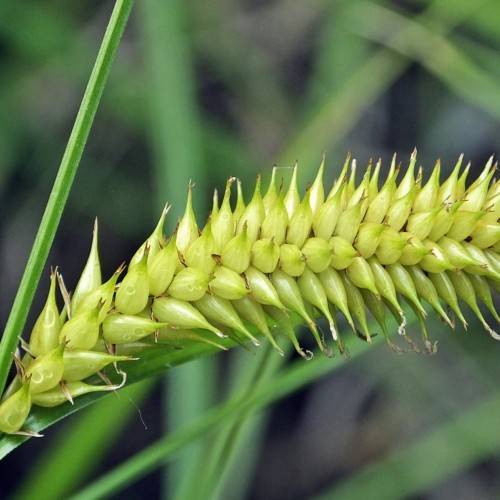
Hybrid Sedge
Carex lupulina x
Watering:
Average
Hardiness Zone:
Sun:
full sun,part shade
Leaf:
Yes
Growth Rate:
High
Drought Tolerant:
Yes
Salt Tolerant:
Yes
Care Level:
Medium
watering
When watering Hybrid Sedge (Carex lupulina x), it is important to be mindful of the moisture levels in the soil. The plant prefers moist soil, therefore, water deeply but infrequently, providing a generous amount of water so that it reaches the plant's roots. Water once or twice per week during the growing season, and reduce watering to about once every 2 to 3 weeks during the winter months when the plant is dormant. In addition, be sure to check the soil moisture level prior to each watering session. If the soil is moist, it's unnecessary to water. If the soil feels dry to the touch, then it’s time to water your Hybrid Sedge.
sunlight
Hybrid Sedge (Carex lupulina x) thrives best in full sun, typically 6-8 hours of sunlight per day. This sun exposure should be direct and as consistent as possible, as hybrid sedge can quickly succumb to the heat of afternoon sun. During its first season, it is best to place hybrid sedge in filtered shade until it becomes better established, as the heat and sun can be harsh for saplings. In more humid climates, hybrid sedge may be placed in full sun more immediately. Therefore, it is important to adjust the amount and duration of sunlight based on your local climate.
pruning
When pruning Hybrid Sedge (Carex lupulina x), it is best to perform a light pruning in early spring or late fall, while the plant is in its dormant stage. This will help you maintain the shape of the plant and keep it healthy. To prune Hybrid Sedge, use sharp pruning shears to cut out any dead or unhealthy growth. If the plant is large and mature, you can remove 1/3 of the oldest stems down to the ground. As you prune, remove any brown or damaged leaves, stems and foliage, as well as any extra or congested growth. Keep in mind that if you prune too much, it may discourage vigorous growth and sacrifice potential flowers.
